ETRUSCHI DEL NOVECENTO(20TH CENTURY ETRUSCANS)
Exhibition View: Etruschi del Novecento (20th Century Etruscans), Fondazione Luigi Rovati, Milano MI, Italy 2025. Courtesy of the Fondazione Luigi Rovati
On 2 April Fondazione Luigi Rovati inaugurated the exhibition “Etruschi del Novecento (20th Century Etruscans)”, the ambitious project jointly organised with the Mart Museum in Rovereto. True to the foundation’s identity, the exhibition continues the journey begun with the Mart show (7 December 2024 - 16 March 2025) in a distinct and complementary show, proposing a selection of iconic works that shed light on Etruscan culture’s influence on 20th-century Italian artists.
In the exhibition, archaeological finds and masterpieces of modern and contemporary art are displayed along with documents, books and magazines, testifying to the fascination of the artists influenced by Etruscan art’s “anti-classical” aesthetic. Staged over both of the museum’s floors, the exhibition blends into with the permanent collection of the Fondazione Luigi Rovati.
Coperchio di urna cineraria con coppia de sposi Inzio V sec a.C Terracotta Parco Archeologico di Cerveteri e Tarquinia Photo Credit: Courtsey Parco Archeologico di Cerveteri e Tarquinia
A Fascinating Exhibition Route
Visitors are welcomed on the underground floor by the Leone urlante (1957): a “twentieth-century chimera”, a hybrid figure, a fantastic creature embodying the bond between Etruscan art and the experimental approach of Mirko Basaldella.
In the section Inspirations, Etruscan askoi (containers for oily liquids) come back to life in the 1920s porcelain-and-gold vases by Gio Ponti; the ceramic cista La camminata archeologica by Gio Ponti and Libero Andreotti – produced in the second half of the 1920s and on loan from the Poldi Pezzoli Museum (Milan) – echoes an Etruscan cista, a bronze container for storing jewels and cosmetics, from the National Etruscan Museum of Villa Giulia (Rome).
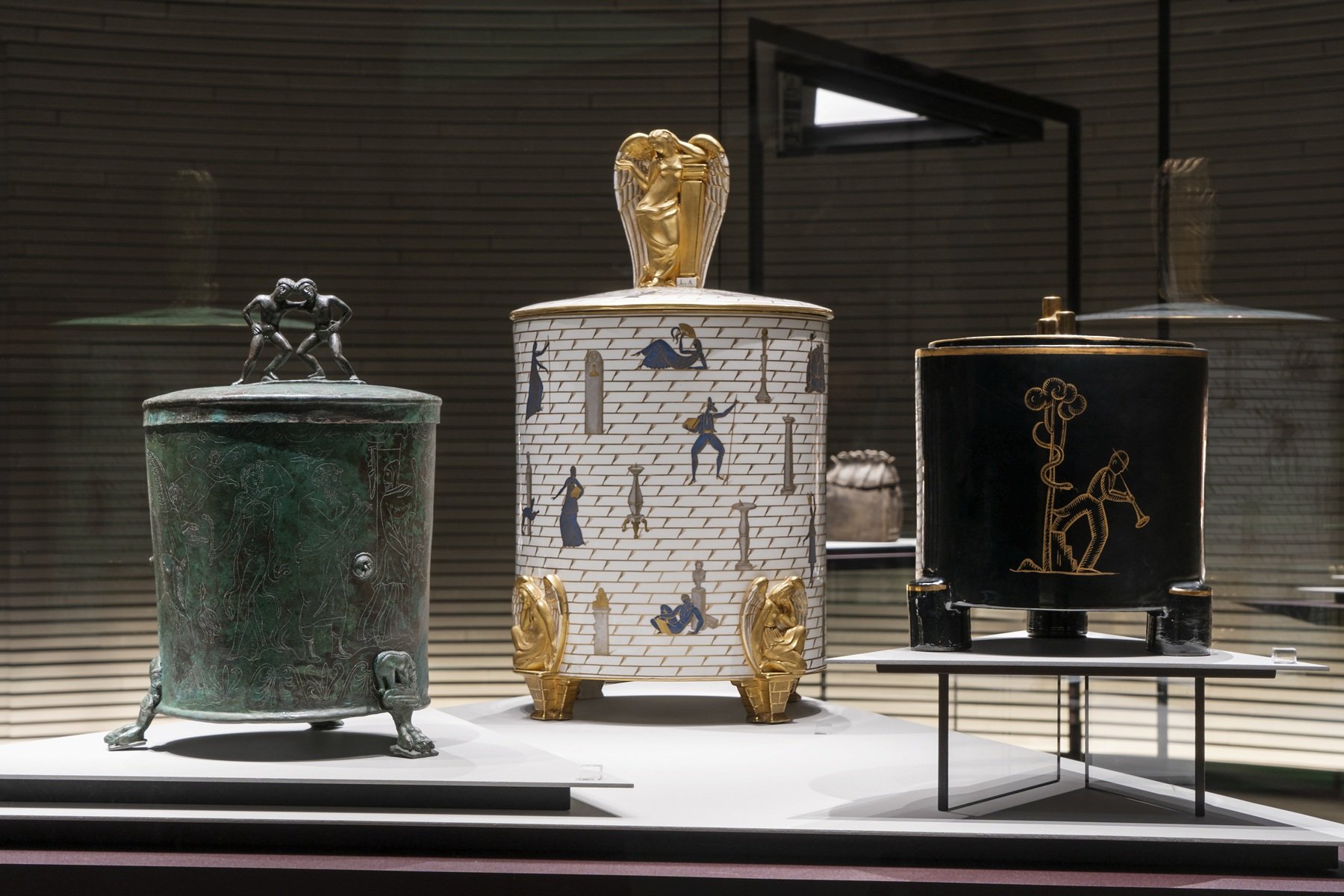

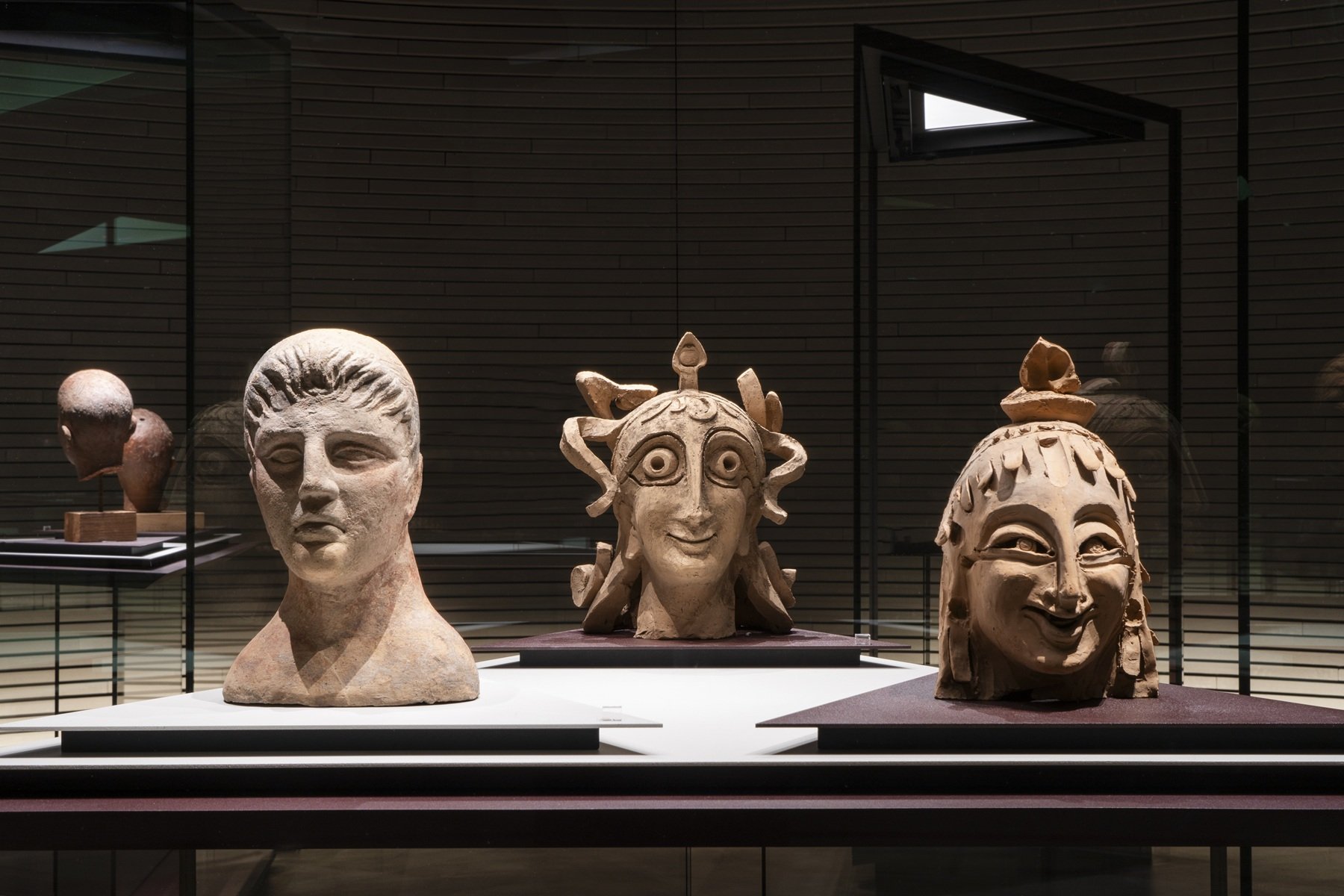
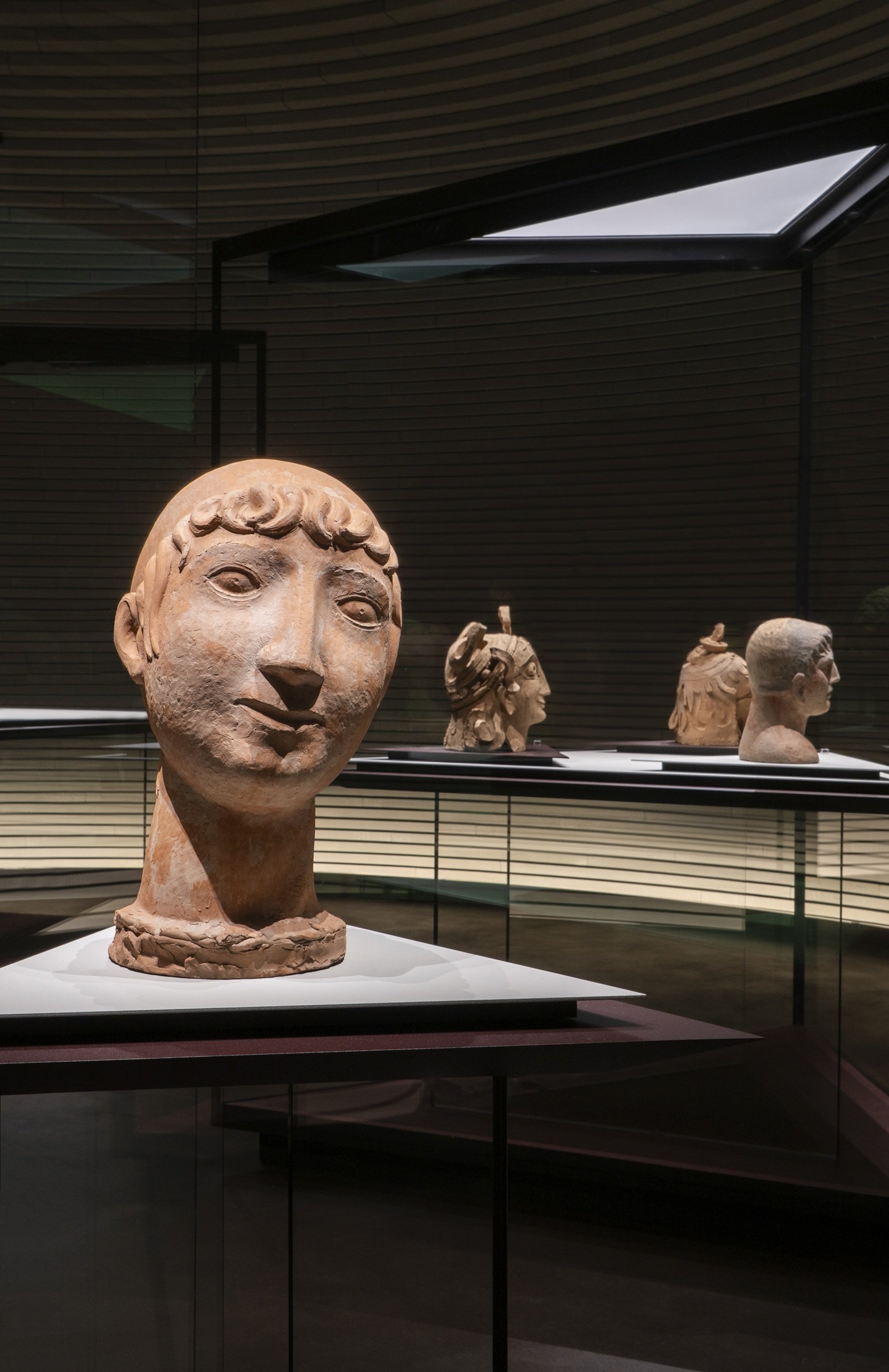
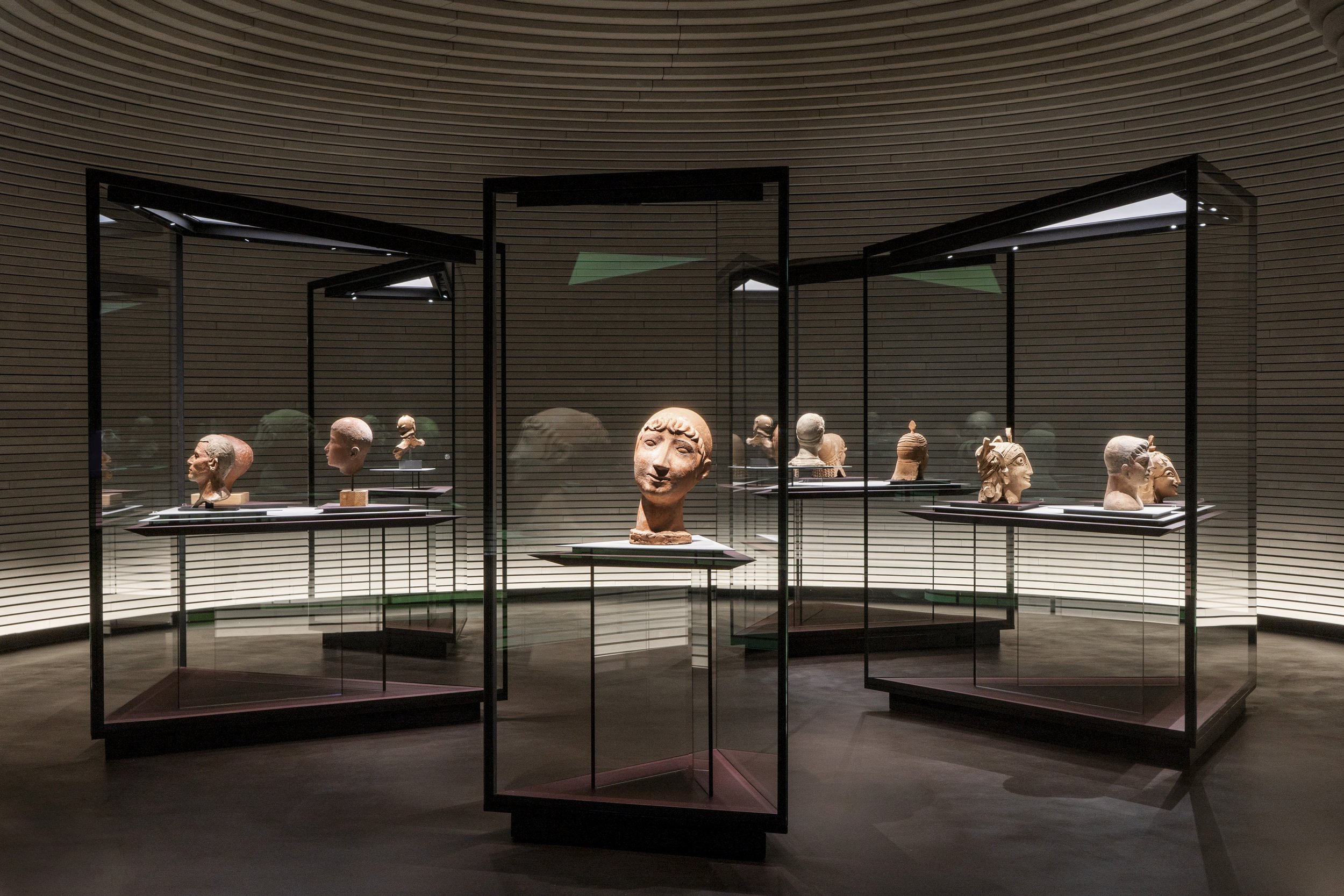

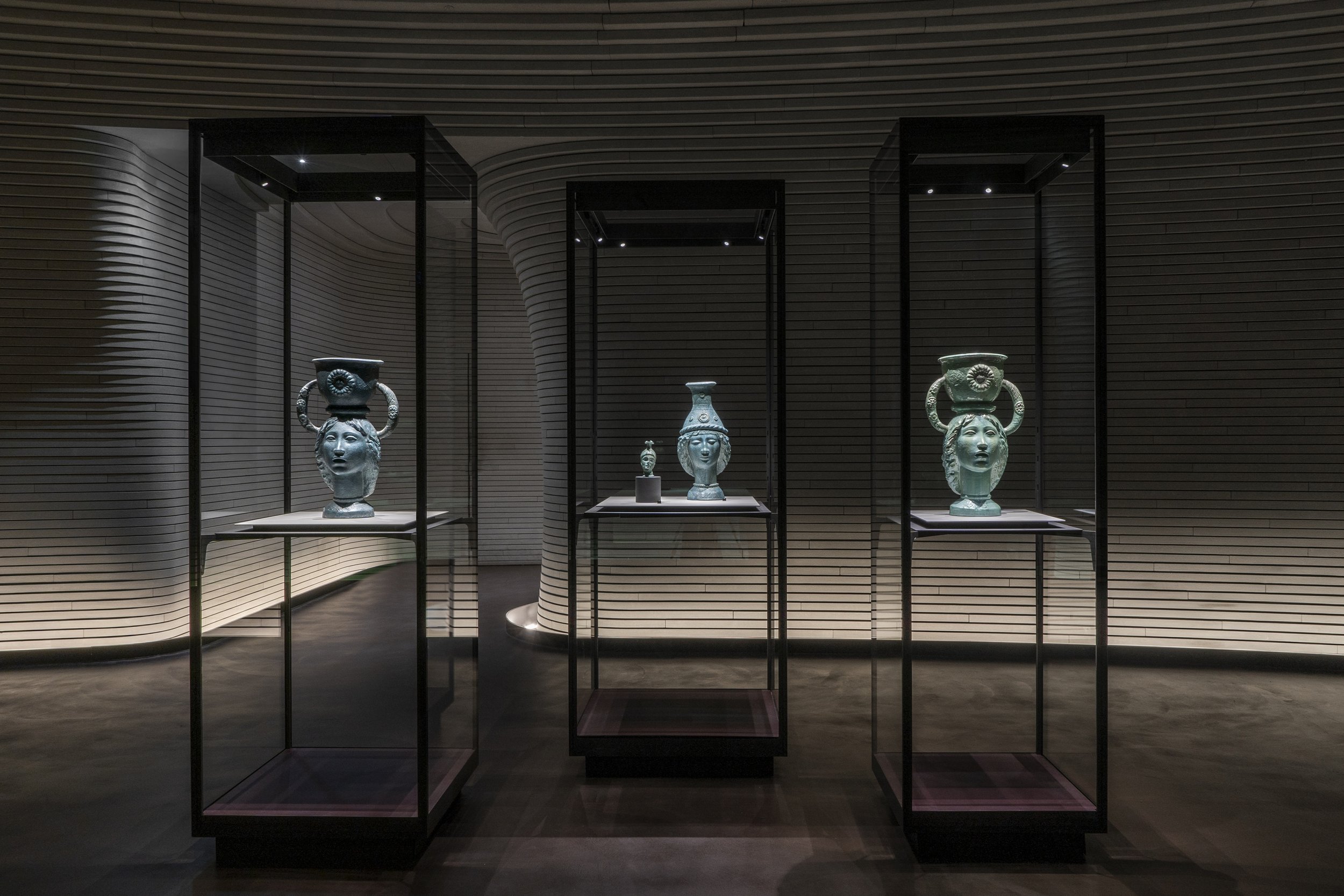
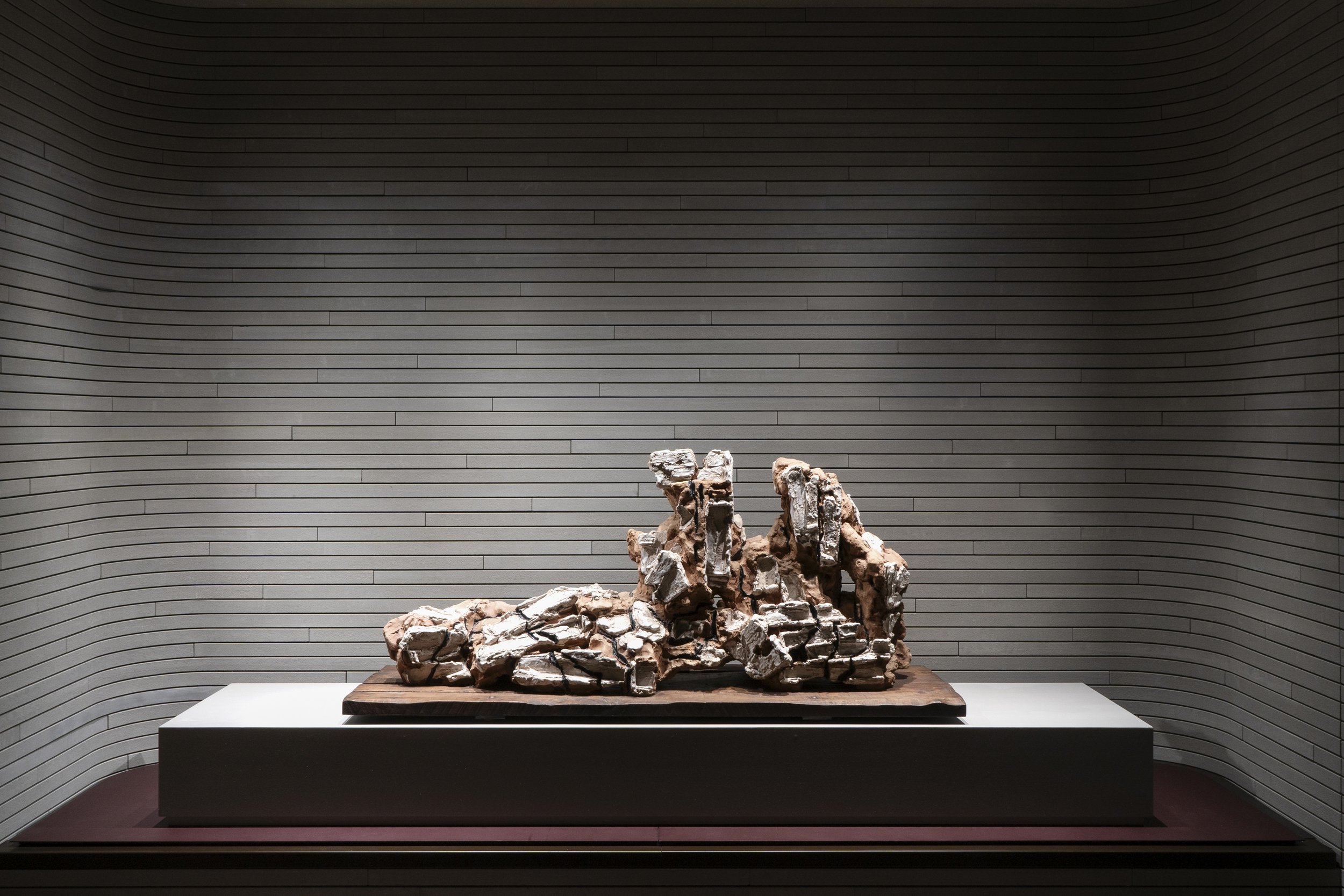
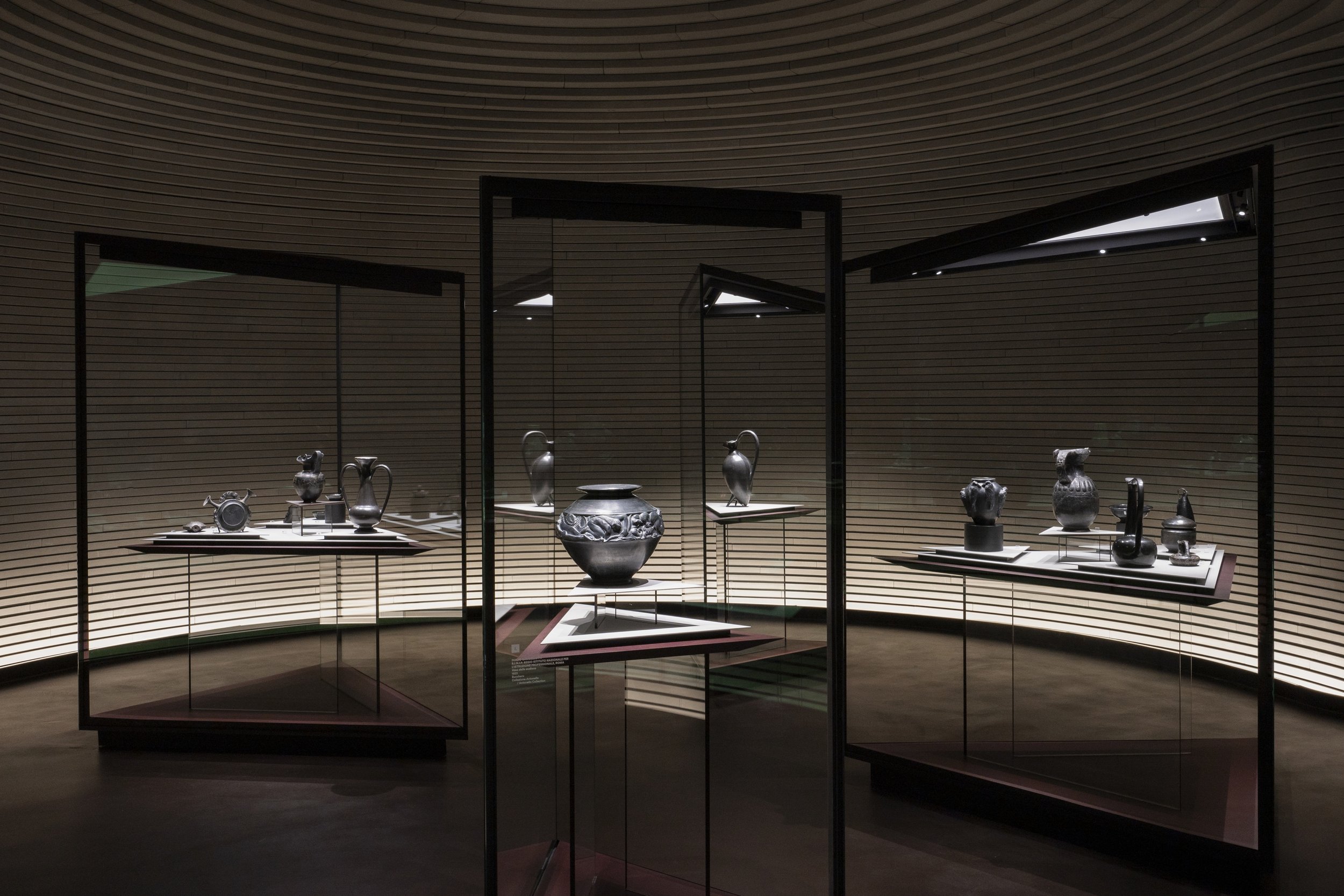
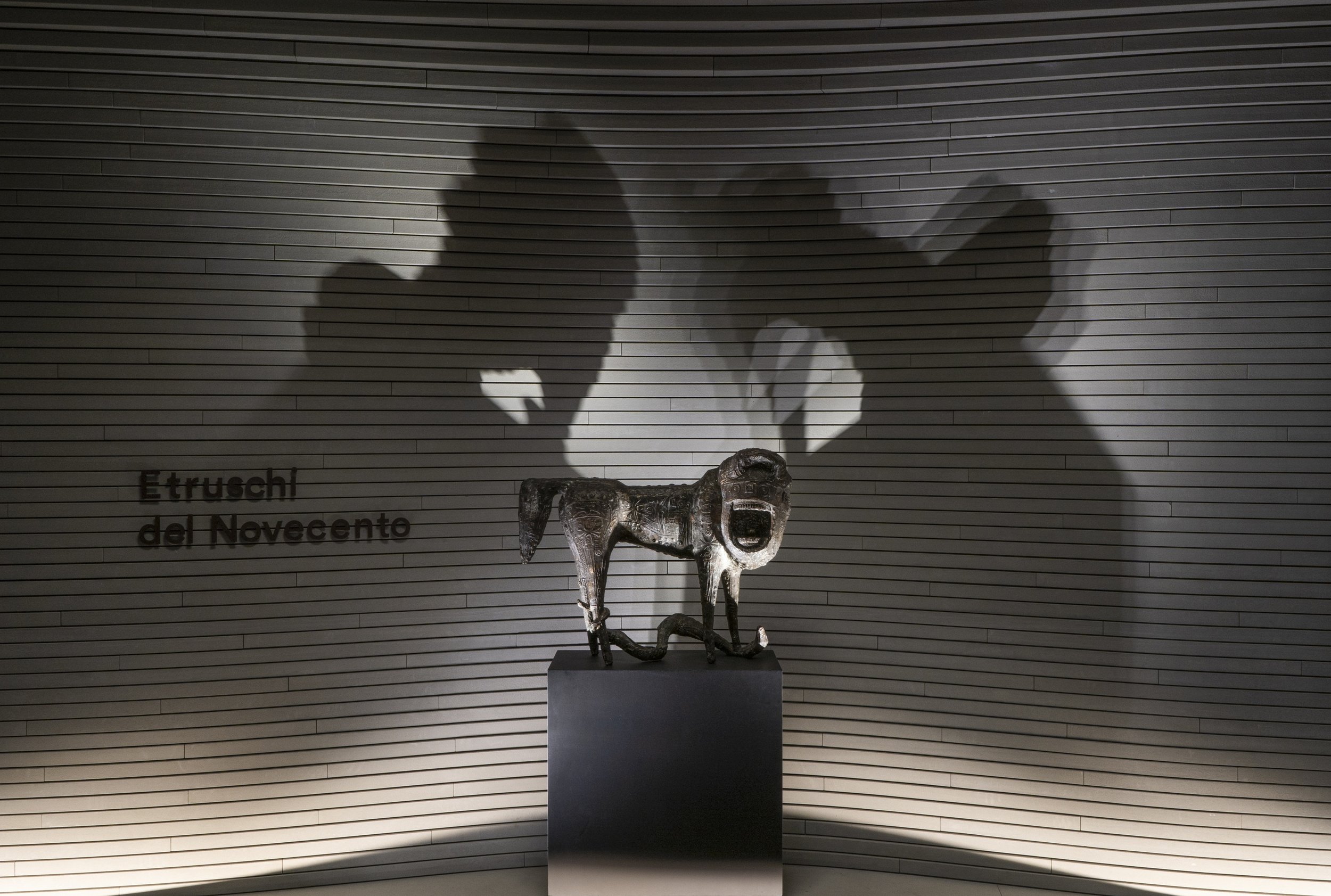
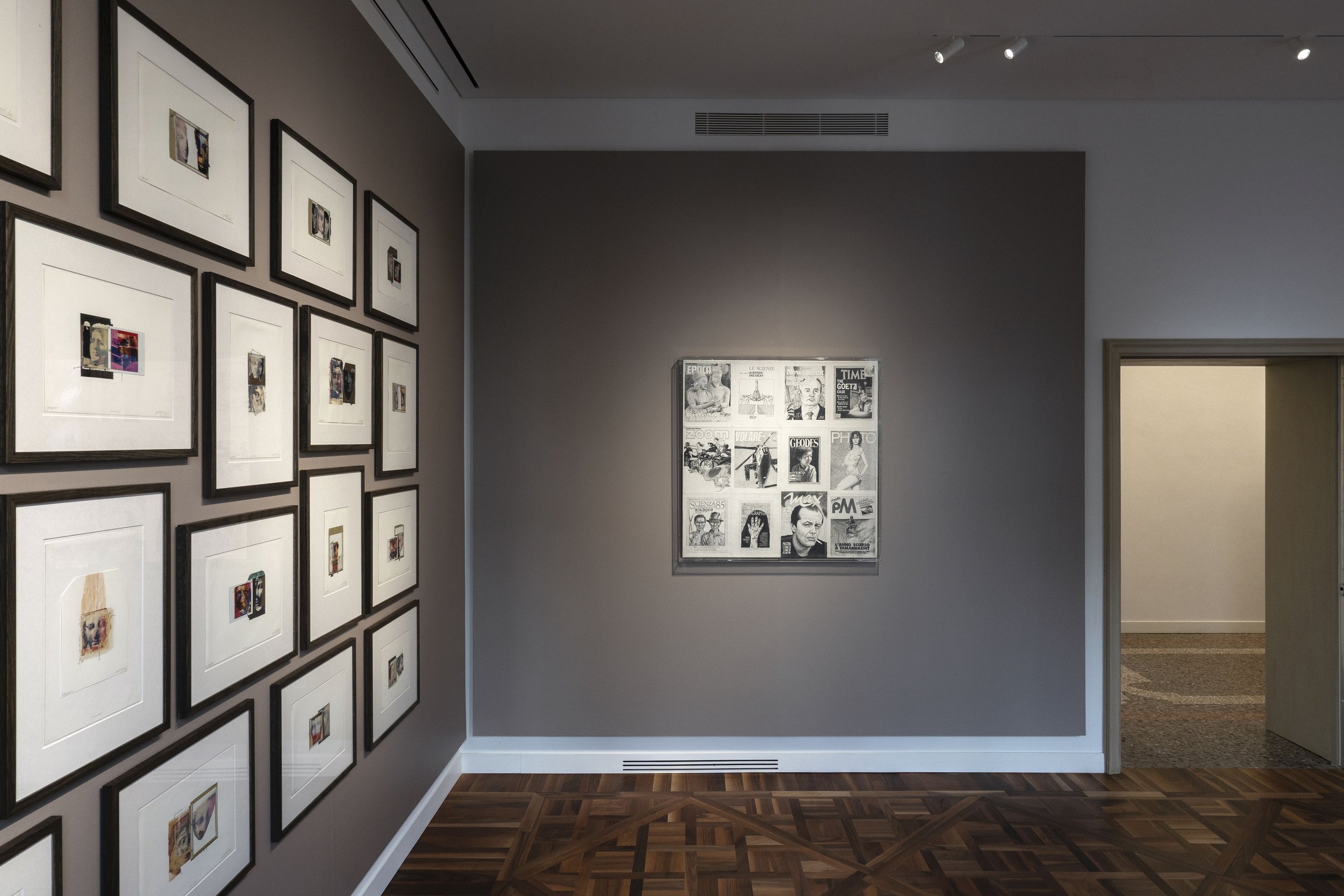

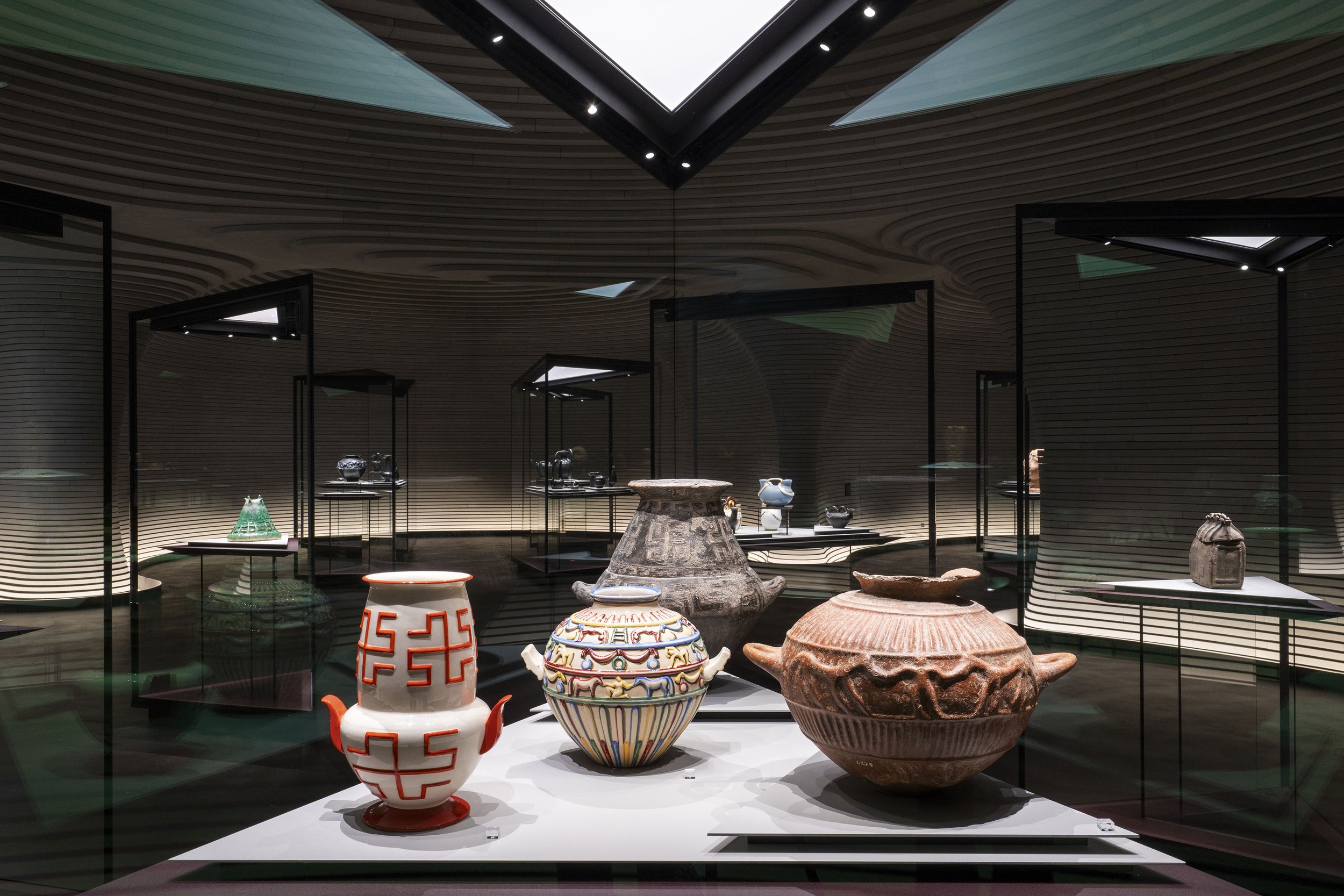


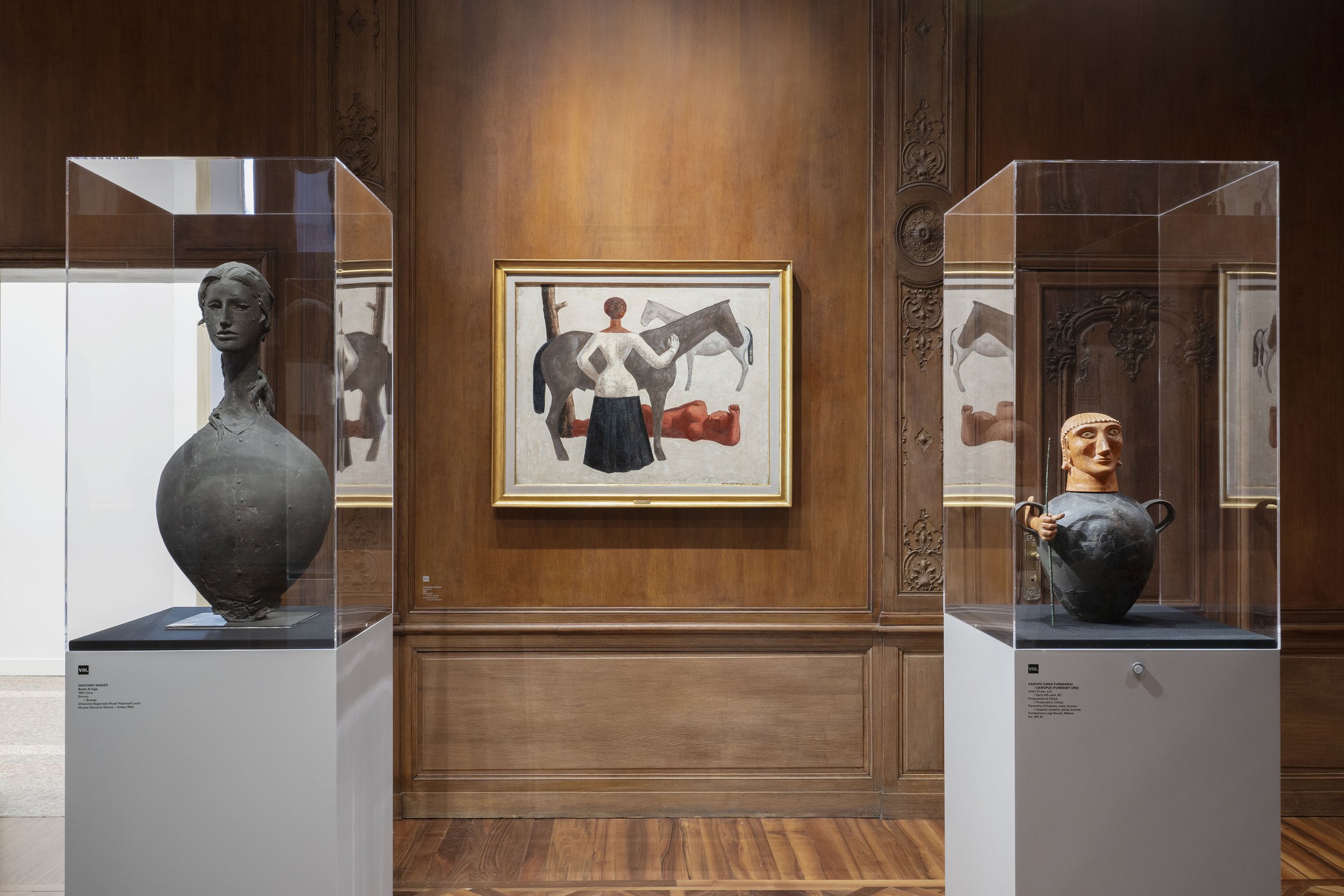

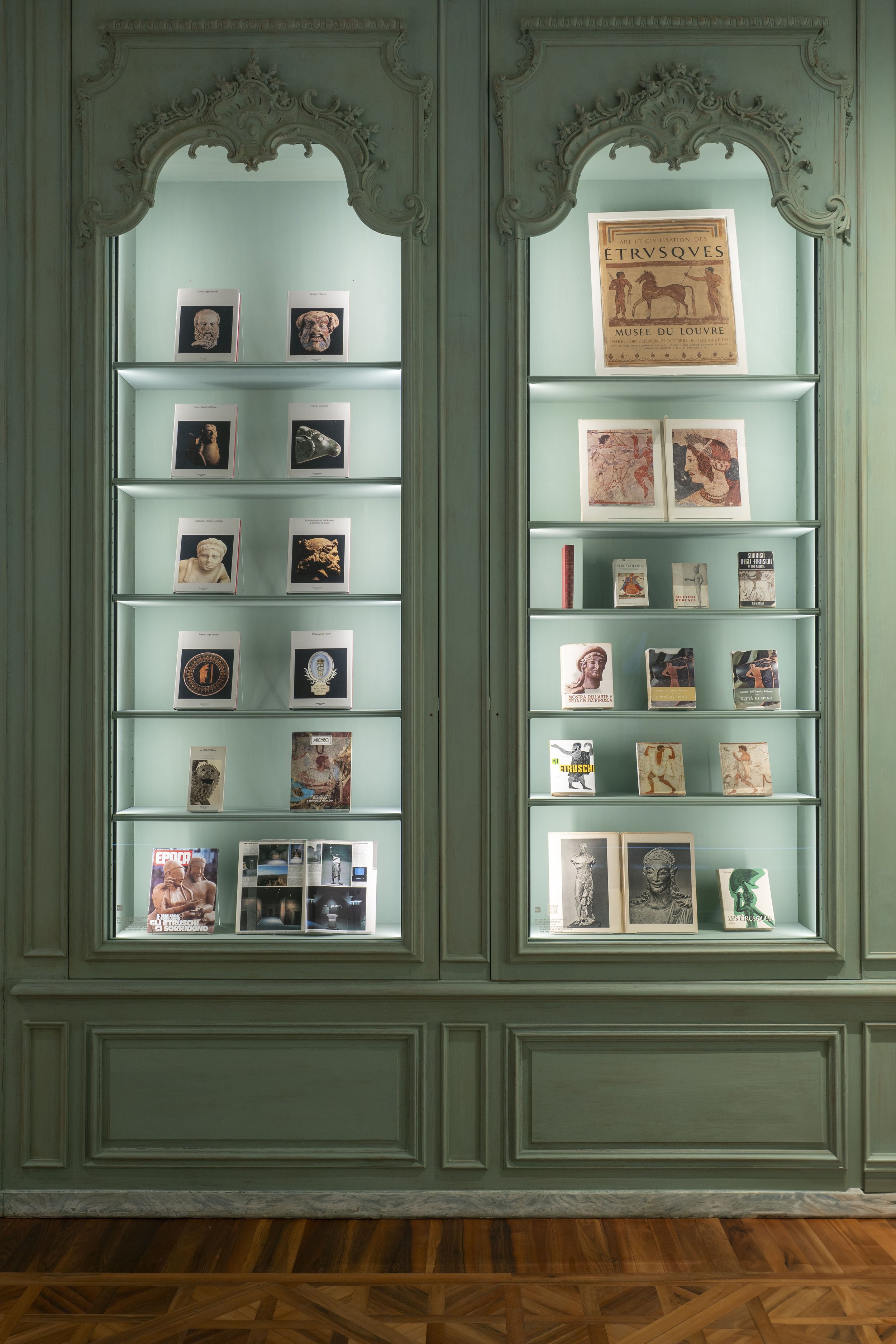



Exhibition View: Etruschi del Novecento (20th Century Etruscans), Fondazione Luigi Rovati, Milano MI, Italy 2025. Courtesy of the Fondazione Luigi Rovati
The motif of reclining figures is explored in the section Modern Reclining figures by the work of Leoncillo Leonardi, a powerful and dramatic interpretation of the famous Sarcofago degli Sposi from Villa Giulia, placed beside the precious Cinerary Urn Lid, on loan from the Archaeological Park of Cerveteri and Tarquinia.The Warhol Room on the main floor has been transformed into the documentation centre for taking a look back at the Appeal of the Etruscans as seen through rare art volumes, magazines, graphic works and posters dedicated to Etruscan culture published, from the late 19th century into the 1980s. In the “White Space”, Paolo Gioli’s series Etruschi (1984) is displayed in full for the first time, along with Alighiero Boetti’s Copertine (1985), an original work from the Fondazione Luigi Rovati’s collection. Paolo Gioli recreates the identity of the Etruscan faces depicted on cinerary urns through his polaroids, giving new vitality to colourless marble faces with chromatic touches and fragments that seem to pulse with life.
From Left to Right: Alghiero Boetti, Cupertino (Anno 1985) 1985 Grafite su carta Fondazione Luigi Milano Photo Credit; Courtsey Fondazione Luigi Rotaie, Milano, Marcello Nizzoli, Bozzette per il Manifesto per la XIX Biennale di Venezia 1934 CSAC- Centro Studi e Archivio della Comunicazione Universita di Parma
In the Copertine series, Alighiero Boetti painstakingly redesigns the covers of important international publications, creating a map of that year’s historic events, a sequence that opens with the cover of Epoca dedicated to the “Etruscans Project”.
Exhibition View: Etruschi del Novecento (20th Century Etruscans), Fondazione Luigi Rovati, Milano MI, Italy 2025. Courtesy of the Fondazione Luigi Rovati
A Multi-Site Exhibition Project
In addition to making use of loans from museums, institutions and collectors, the show benefits from two important collaborations that extend its presence out into the city, and specifically to Villa Necchi Campiglio and the Museo del Novecento. Due to conservation requirements, Arturo Martini’s L’amante morta (1921-22) and Marino Marini’s Popolo (1929), works that are part and parcel of the reflection on the Etruscans’ influence in the twentieth century, are not on display in the exhibition’s spaces but are still a part of the project, visible in the locations where they are customarily on display. The catalogue Etruschi del Novecento contains essays by the curators and scholars such as Matteo Ballarin, Fabio Belloni, Martina Corgnati, Alessandro Del Puppo, Maurizio Harari, Claudio Giorgione, Mauro Pratesi, and Nico Stringa.
School and Educational Activities
The exhibition will be enriched by an extensive offering of educational programs, part of Fondazione Luigi Rovati’s ongoing efforts to give visitors opportunities to learn and explore further. Workshops and group and school visits are designed to offer a more in-depth experience of the exhibition’s major themes, with a particular focus on the influence of Etruscan civilisation on twentieth-century visual culture through a critical and interpretive gaze.
From Left to Right: Fausto Melotti, Gallo, 1955 circa, Ceramica smaltata policroma, Montrasio Arte, Monza, Photo Credit: @Matteo Zarbo per Montrasio Arte, Monza, Uma a capanna, Fine IX, a. C. Ceramica d’impasto, @Fondazione Luigi Rovati, Milano Photo Credit @Giuseppe e Luciano Malcangi per Fondazione Luigi Rovati
Special Offers
For holders of the FLR Card and for the Amici del Mart, entrance is free for the duration of the two exhibitions and reduced for the rest of the year. In addition, visitors in possession of a ticket to one of the two museums can access the other for a reduced price for the duration of the two exhibitions.
The exhibition is supported by
Radio Monte Carlo - Media Partner
Italo Italy's first private operator on the high-speed rail network, as part of its activities to support culture, collaborates with the Luigi Rovati Foundation and promotes the exhibition “Etruschi del Novecento (20th Century Etruscans)”.
For more information and to consult the foundation’s dedicated educational programs, here. To learn about this exhibition and others, please visit Fondazione Luigi Rovati’s website here. The musuem can also be found on Facebook, Instagram, and YouTube.






